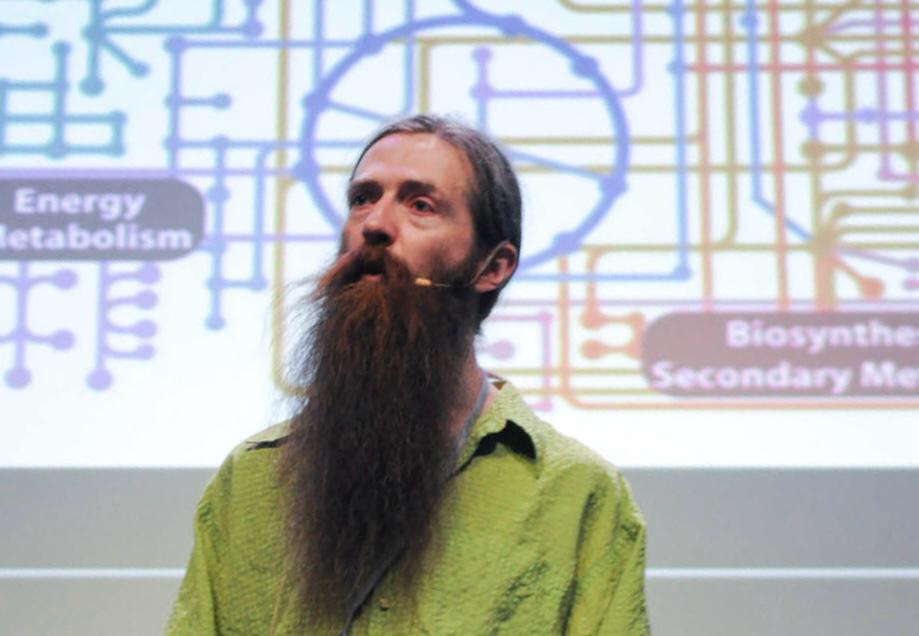•Senomorphics and immune clearance: Companies like Oisín Biotechnologies and Revel Pharmaceuticals are developing precision RNA-guided “suicide genes” to selectively clear senescent cells.
•Cancer immunotherapies: The rise of CAR-T cells and checkpoint inhibitors has largely fulfilled de Grey’s forecast that “managing abnormal cell proliferation will become an engineering problem.” Cancer, while not eradicated, has seen five-year survival rates rise above 70% globally (Lancet, 2025).
The immune rejuvenation strategies he sketched — selectively pruning worn-out immune cells to make room for new ones — are now fundamental in clinical immunogerontology.
⸻
3. Mitochondrial Mutations and the Quest for Powerhouse Protection
Mitochondrial dysfunction was long a dark mystery. De Grey’s call to “back up mitochondrial genes into the nucleus” — once considered theoretical — has since been realized in model organisms.
•MitoSENS project: By 2021, the SENS Research Foundation demonstrated successful allotopic expression of critical mitochondrial genes, rescuing defective energy metabolism in mammalian cells.
•Mitochondrial replacement therapy (MRT): Approved in the UK for preventing inherited mitochondrial disease, MRT’s precision techniques now inform anti-aging applications: swapping or editing defective mitochondrial DNA to restore youthful energy flux.
•NAD⁺ replenishment and mitophagy activation: Supplementation strategies (NR, NMN) and mitophagy boosters (urolithin A, spermidine) have demonstrated measurable improvements in mitochondrial function and muscle endurance in human trials (Nature Aging, 2022–2024).
Where de Grey spoke of mitochondrial damage as a theoretical frontier, the field now stands at the threshold of “bio-energetic rejuvenation.”
⸻
4. Intracellular Waste: Autophagy Re-Engaged
“The garbage inside our cells,” as de Grey quipped, “accumulates until the cell cannot function.” Today, autophagy enhancement is one of the most celebrated targets of longevity science.
•Rapamycin and rapalogs (e.g., RTB101, everolimus) extend healthy lifespan in multiple species and are in ongoing human trials for immune rejuvenation.
•Caloric restriction mimetics (resveratrol, metformin, berberine) have entered mainstream clinical prevention for metabolic aging.
•Gene therapies activating TFEB, a master regulator of lysosomal biogenesis, have reversed lipofuscin accumulation in aging primates (Harvard, 2024).
Cellular waste clearance — once metaphor — is now measurable medicine.
⸻
5. Extracellular Junk: Clearing the Plaques
When de Grey spoke of “junk between cells,” he referred to amyloid and similar aggregates — long blamed for Alzheimer’s and related disorders. In the last three years, the tide has turned:
•Aducanumab, lecanemab, and donanemab have achieved statistically significant slowing of cognitive decline by reducing amyloid plaques.
•New amyloid vaccines and CRISPR-based microglial reprogramming promise proactive clearance mechanisms rather than post-facto cleanup.
•The SENS-predicted concept of “periodic maintenance” now guides Alzheimer’s research strategy — treat early, treat repeatedly, keep the system clean.
⸻
6. Extracellular Crosslinks: The Return of Elasticity
De Grey’s “loss of elasticity” in arteries and tissues — due to sugar-driven crosslinks like glucosepane — was once the least tractable of his seven problems. Today, breakthroughs abound:
•Crosslink-cleaving enzymes engineered by Yale’s Spiegel Lab (2020–2024) have shown preclinical reversal of arterial stiffness.
•Glycation blockers such as alagebrium derivatives and ALT-711 analogues are back in advanced trials.
•Nanoparticle-targeted enzymatic therapies promise to dissolve AGE (Advanced Glycation End) crosslinks without harming normal extracellular structure.
Human arteries that once hardened irreversibly are, for the first time, becoming pliable again.
⸻
7. Intracellular Junk in Lysosomes: Cleaning the Cellular Vaults
Lysosomal storage and “undigestible” byproducts such as A2E and ceroid were once hopeless. Now:
•Gene therapies delivering novel lysosomal enzymes (e.g., through lentiviral or AAV vectors) have reversed age-related macular degeneration in animals.
•Artificial lysosomes — polymeric nanovesicles capable of degrading stubborn substrates — are in early clinical testing.
•The SENS idea that “we can add enzymes evolution forgot” has become central to synthetic biology’s anti-aging agenda.
⸻
From Theoretical Rebellion to Experimental Fact
When de Grey spoke in Cambridge, he was urging engineers and computer scientists to think biologically — to see aging as “a software maintenance issue.”
In 2025, major institutions do precisely that. The NIH now funds geroscience as a dedicated division; Google’s Calico, Bezos’ Altos Labs, and the Rejuvenome Project all pursue the SENS paradigm under different names.
What has emerged is a discipline of Rejuvenation Biotechnology — not the denial of aging, but its scheduled maintenance. Animal models have achieved 30–50% lifespan extensions. The first generation of human “biological age clocks,” refined through deep methylation sequencing (Horvath, Levine, Sinclair, Hannum), can now measure rejuvenation in months.
Even the taboo of “life extension” has softened. The 2025 WHO definition of health now includes “the preservation and restoration of youthful biological function.”
⸻
The Cultural and Ethical Turn
De Grey’s talk ended with a paradox: “We do not fear curing cancer — why then fear curing aging?”
Today that question resonates globally. Singapore, the UAE, and the EU have established Longevity Missions equating anti-aging research with climate or AI safety initiatives. Insurance markets are being redesigned around “healthspan,” not retirement age.
Critics once mocked de Grey’s timelines — “a thousand years of life.” Yet, as median life expectancy approaches 90 in several nations, and biological age reversal of 5–10 years has been demonstrated in small trials (Turn.bio 2024, Rejuvenate Bio 2025), the horizon feels less like science fiction and more like science catching up to vision.
⸻
Conclusion: The Maintenance of Humanity
A century ago, antibiotics abolished the tyranny of infection.
In our century, rejuvenation biotechnology may abolish the tyranny of decay.
Aubrey de Grey’s 2013 Google talk read then as manifesto; today it reads as blueprint. The body is a machine — self-healing, self-repairing, and now, with our help, self-renewing.
The promise he outlined — not immortality, but indefinite health — stands no longer as philosophical provocation, but as medicine’s most ambitious and most necessary frontier.


